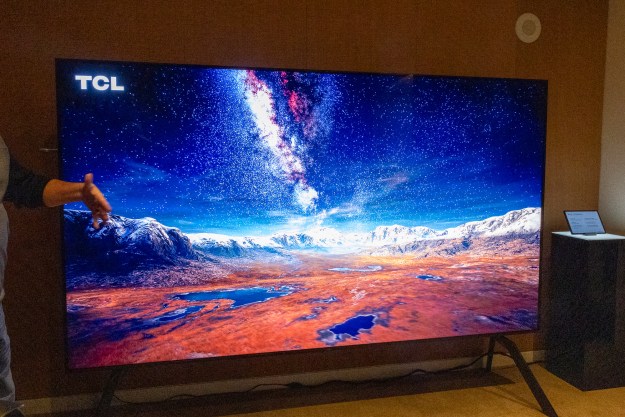For a moment, we were shocked to hear Sony only mention a single TV model during its press conference at CES 2016. After all, each of Sony’s competitors announced entire product lines spanning multiple series, with several models to each series — that’s what you do at the world’s largest consumer electronics trade show. Yet here was Sony, with just one TV?
As it turned out, Sony actually has three new TVs for 2016. Still, to someone sitting outside of Sony’s corporate headquarters, that probably looks like a sign of desperation. If you ask us, though, it’s a strategic maneuver of pure genius.
During a special press event held last Spring, Sony announced it was systematically shuttering its Sony Only stores across North America. The company’s President and COO, Mike Fasulo, also clarified that the spin-off of Sony’s TV division announced earlier that year was an internal decision designed to help Sony reconquer the TV market, not a sign of its impending doom. Of course, it was difficult not to suspect that Sony was simply putting out fires and using the press as a hose, but when Sony was finished filling us in, we realized the company really did have a plan — one crazy enough that it just might work.
Rather than spread itself thin trying to beat its South Korean rivals at their own game of racing to the bottom, Sony’s new course would have them drastically cutting their product line down to just a few skus, and all of them would be premium. Sony might no longer make the TV you’d put in your bedroom or kitchen, but it was damn sure going to make the TV you’d want in your living room and home theater. Indeed, Sony never lost its mojo, the company just needed to figure out how to channel it.
This year, Sony offers the XBR-X930D in 55- and 65-inch models, the -X940D (a 75-inch version of the X930D with full array backlights) and the -X850D series, available in 55-, 65-, 75-, and 85-inch models, all premium 4K Ultra HD televisions . We saw them in action at CES, and we’re confident they will all be chart-toppers this year.
The X930D is a remarkably thin TV — too thin to accommodate a full array local dimming (FALD) back-light system — and while that may understandably raise flags with some videophiles, Sony has developed an edge-mounted back-light system with local dimming which it hopes will make believers out of skeptics convinced that direct back-lighting is the only way to get a uniformly bright picture with solid black levels. Sony calls this technology Slim Backlight Drive, and claims it not only better directs light to specific areas of the screen, but offers more zones of local dimming than previously possible with an edge-lit TV.
How much of that is Sony marketing smoke and mirrors is unclear, but we can say that the demonstration material running on the many X930D TVs on display did include some scenes with bright objects on black backgrounds, and we were impressed both with the depth of the blacks and with the minimization of halos and edge-light bleeding.
All of Sony’s new TVs support HDR and feature Triluminous displays capable of achieving a wider color gamut than 1080P TVs of years past. In short, they easily satisfy the requirements set forth by the UHD Alliance for the premium tier of 4K Ultra HD televisions.
Moreover, these new TV’s will feature Sony’s very best processing, which has always set the company apart from others. Sony TVs have a recognizable look that people tend to gravitate toward, and these sets are replete with that look and feel.
Perhaps the most obvious — and perhaps influential — change s is the absence of the huge speakers that flanked Sony’s best televisions last year. While the speakers provided outstanding sound, they were an eyesore to some, and impractical for anyone with space limitations. While sound quality will take a huge hit, the form factor benefits a great deal. And besides, at this level, the TV deserves a dedicated sound solution — at least a high-quality sound bar if not a full-blown surround system.
Time will tell whether or not Sony’s premium-only strategy will pay off, but judging by the way its TVs are looking this year, we think it has a good shot at reaffirming itself as the world’s leading LED/LCD TV maker, at least in terms of product quality and performance.
Now, if we could just convince Sony to introduce an OLED TV.
Editors' Recommendations
- Sony debuts the Bravia 9, its brightest 4K TV ever, alongside new 2024 models
- You Asked: QLED and mini-LED burn-in, missing HDR, and Apple TV and HDMI 2.1
- Samsung QN90D first look: setting the bar for 2024
- If you don’t see CBS in 4K on YouTube TV, try this
- You can now make your own AI art with Amazon Fire TV




